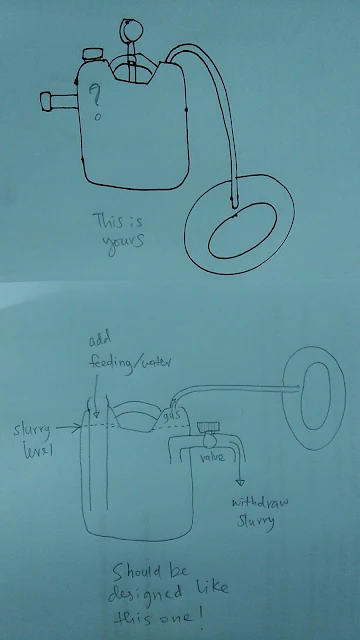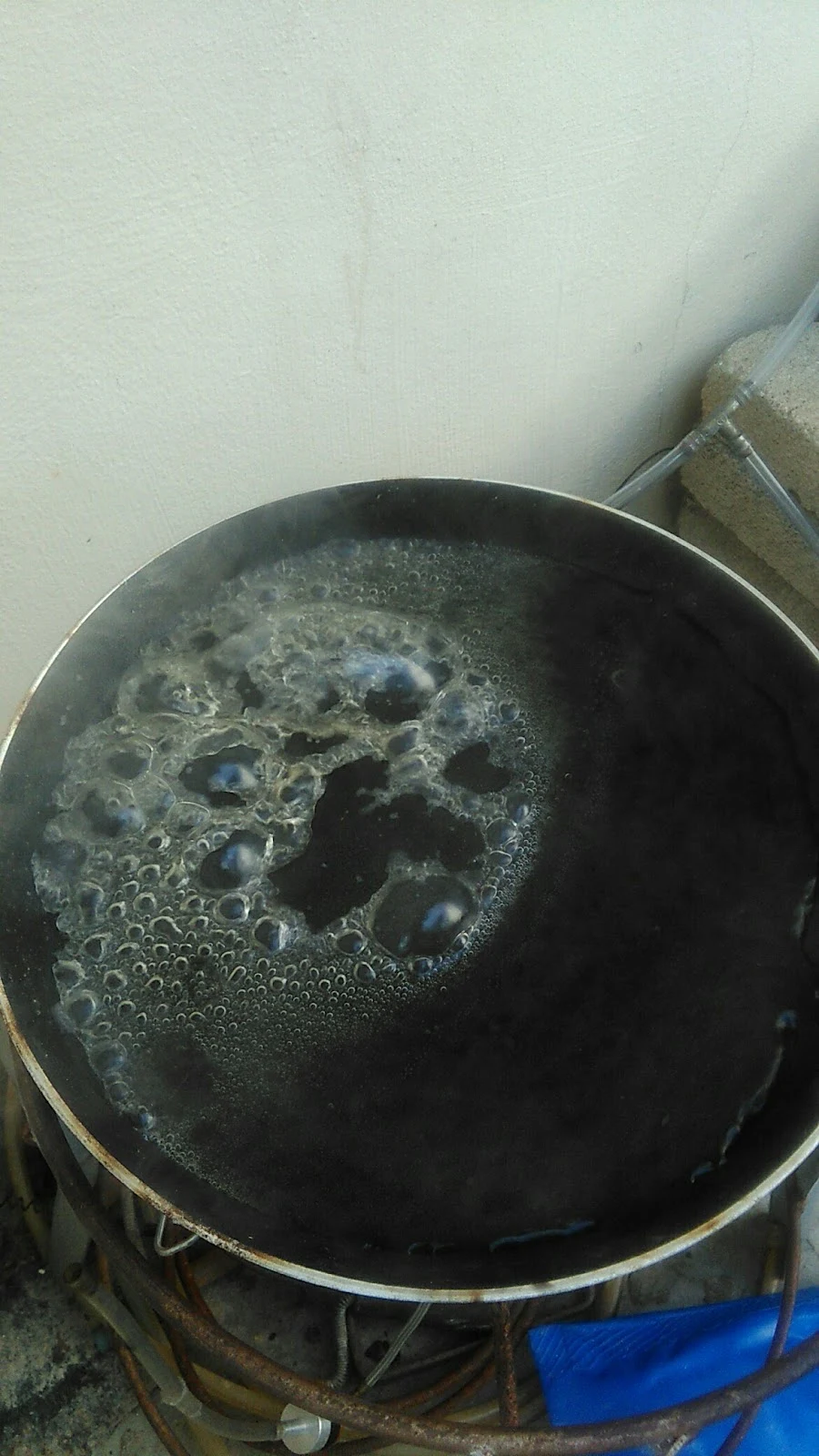Search This Blog
Wednesday, November 16, 2022
How to calculate the sizing & volume (diameter & height) digester to be constructed
Tuesday, October 18, 2022
3 PRIME STAGES TO INITIATE BIOGAS
AT FIRST MY GAS IS BURNING BUT THEN STOP PRODUCING. WHY?
WHY MY GAS IS NOT BURNING?
Saturday, August 13, 2022
Biogas Digester Simple Design
Wednesday, July 20, 2022
Biogas Bag for Storage
Thursday, April 21, 2022
Vertical Biogas DIgester Design
Source: Joel Canaria
Observe a typical design of a digester.
Inlet - feeding occurs here having the largest diameter among all.
Gas outlet - biogas produced from the process goes out thru here connected to external storage.
Overflow - where slurry displaced by a new feeding goes out thru here.
Stirrer - to make sure agitation takes place. Optional for some practitioner.
Drain - to let the accumulated sediment to flow out thru to be discarded after operating for sometime.
Friday, April 15, 2022
Horizontal Biogas Digester Design
I would like you to check out this design from a friend, more details please check under the QR code. Usually the blue tank converted as biodigester in a vertical form. This is quite different which someone could try on horizontically.
Source: Jørgen Rasmussen (A Clean New World)
Or for more explanation please refer to below video:
Floating drum system for biogas storage
The system consist of two components:
1. The floating drum that has inlet and outlet for biogas. Inlet will let the biogas into the drum to be stored. Outlet is to let the biogas out when it is needed so should there be valve installed to control the process.
2. The base drum that contained water act as a platform for upper drum to float when there is gas produced. A steel guide installed to make sure the floating drum won't fall to the side.
So both drums are of different volume
a. floating drum is 160 liter
b. base drum is 200 liter
source: Biogas DIY FB GroupThursday, April 14, 2022
Biogas digestate as fertilizer
Sunday, April 10, 2022
Filtering biogas with water to reduce its carbon dioxide content
Filtering biogas with water may fulfill two needs:
- Biogas mostly consist of CH4 (methane) and CO2 (carbon dioxide). So, filtering with water could lower the percentage of CO2 in your biogas so that it has more CH4 with higher calorific value and shorter time for cooking. Higher CO2 percentage mean you may have much volume of biogas but with little percentage of CH4 end up with longer cooking time. Only CH4 is flammable and not CO2.
- Lower CO2 content in your kitchen when cooking inside own house mean healthier environment.
Sunday, March 27, 2022
Leak test for biogas digester
Actually leak test should be done before actual run or after you finished fabricating the digester.
Or if you want to perform in the middle of process by putting soap water at joins to see whether are there bubbles formed.
Saturday, March 12, 2022
Wednesday, February 23, 2022
Basic Feature of a Biogas Digester
- Feeding inlet (with or without valve)
- Biogas outlet (valve recommended)
- Slurry outlet (valve recommended)

Saturday, February 5, 2022
How to Modify a Gas Burner for Biogas
Biogas For Beginners: Off Grid Eco Power a DIY Guide
This Book is a Straightforward Guide For The Complete Beginner!
In less than a day you will learn:
◆ That you don’t have to high gas bills anymore
◆ That you can easily make free gas for cooking & heating
◆ That you can save money and help the environment at the same time
◆ And much, much more!
If you want to save money on your bills, help the environment, or live your life off-grid then this is your first step on the ladder to your new life.




















